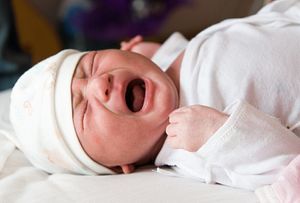By now, most Diplomat readers probably know that China has officially ended its one-child policy, in a decision announced after the fifth plenum in Beijing (see the other main takeaways from that meeting here). Couples will now be allowed to have two children, ending an over three decade-old policy that restricted families to having one child. The decision was made to “to balance population development and address the challenge of an aging population,” according to Xinhua.
The change is big news from a political messaging standpoint – China’s government has been slow to move away from the one-child policy, despite experts from China and abroad predicting a demographic crisis. Part of the problem was that the policy was so lucrative: Beijing has said the government collects around $3 billion a year in related fees, though that figure may actually be a conservative estimate. An independent analysis from a Chinese lawyer found that in 2013, 23 of China’s 31 provinces raked in $3.1 billion in fines.
But those eye-popping figures are also telling of another reality: if so many people are being fined, that means a lot of China’s families were already ignoring the one-child policy. Having a second (or third, or fourth) child was always an option to those families who could pay the fine – or who could be reasonably sure of avoiding fines altogether, as many of China’s migrants are. Leslie Chang, writing for ChinaFile, suggested back in March 2013 that the one-child policy was “slipping into irrelevance.”
The truth is that by 2015, the one-child policy was riddled with exceptions and loopholes. Many couples are already allowed to have two children: those who belong to ethnic minority groups, rural residents, couples where one parents is an only child (thanks the most recent update, announced in 2013). Families whose first child suffered from a disability (or, in some provinces, was simply a girl) were also allowed to have a second child. Plus, as noted above, the policy effectively never applied to the wealthy, as a fine was the enforcement mechanism. As Chang noted, the frequent moves of China’s migrant population also meant that this population group (which counts over 270 million members) could generally have second or even third children without repercussions.
The upshot may be that every family in China that wanted a second child has already had one. And, increasingly, Beijing is discovering that many people in China simply don’t want a second child. When the one-child policy was relaxed in 2013, demographers predicted between 10 to 20 million couples were newly eligible to have a second child. But as of May 2015, less than 1.5 million couples had applied to do so.
It seems unlikely, then, that this final move away from the one-child policy will spark a baby boom in China. The underlying issue is no longer about China’s government stance on family planning, but about a social change in China: Beijing, like governments around the world, is discovering that a more urban, better-educated populace generally isn’t interested in producing large families. China’s low fertility rate – roughly 1.5 children per woman – won’t be solved by scrapping the final remains of the one-child policy.
As Mei Fong, the author of One Child: The Past and Future of China’s Most Radical Experiment, notes, many Chinese women in particular feel having a child would mean giving up the careers they worked so hard to get. Fong writes on her website:
[E]very indication suggests they won’t be able to turn on the baby tap with the same ease they turned it off. People all over China are making the same calculations I was making, and many are deciding that having one, or no children, is the best way forward.
So, demographically, the change is unlikely to have a major impact. Meanwhile, it’s important to note that China hasn’t scrapped the policy altogether: it’s moving to a “two-child policy” instead. Clearly the change is driven by demographic realities, not by an impulse to reduce government intrusion into Chinese family’s decisions. Beijing will continue to keeps tight restrictions on many fertility decisions, including discouraging single parenthood (by, for example, not allowing single Chinese women to freeze their eggs).
































